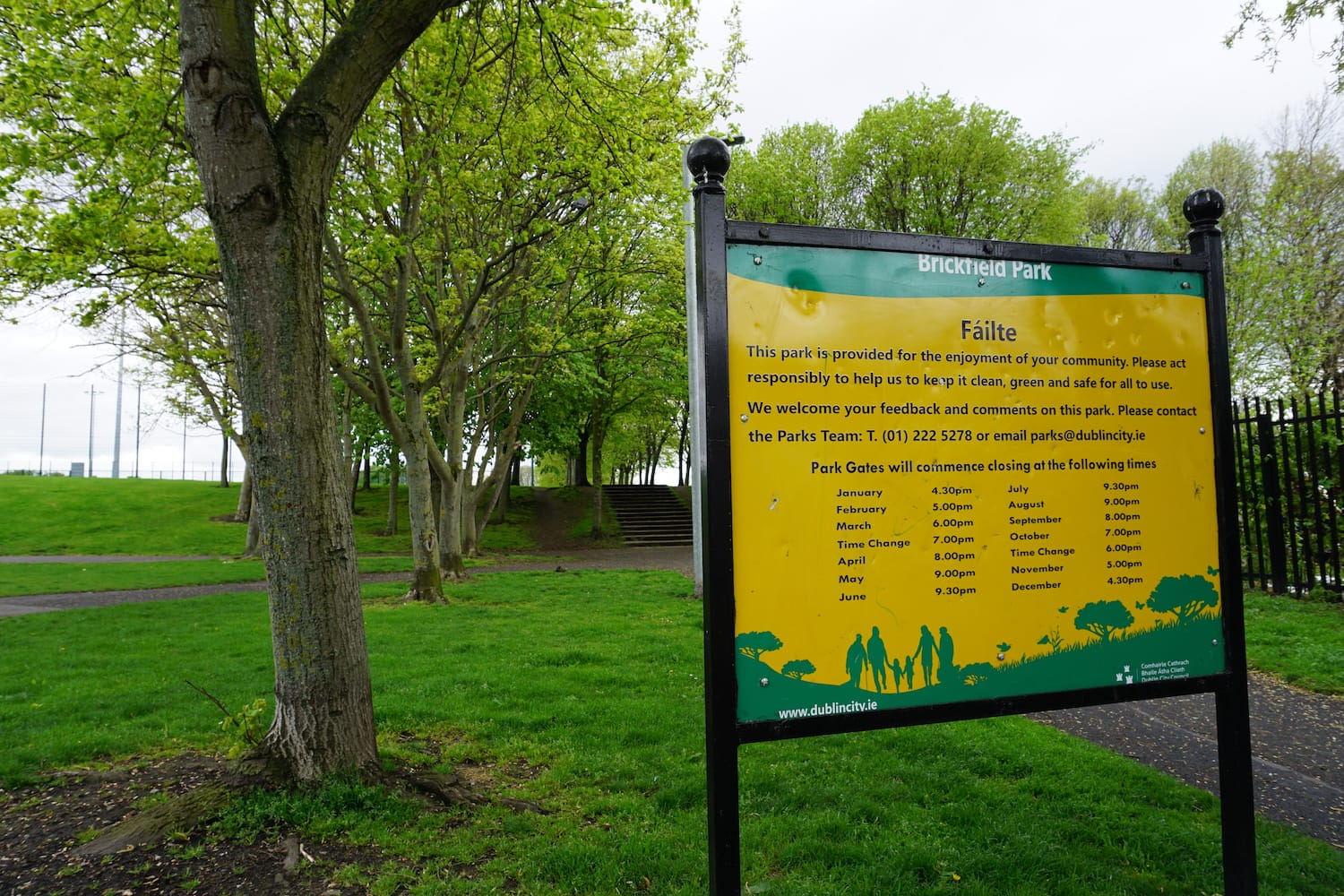Council moves on plan for 5,000 homes on lands between Inchicore and Ballyfermot
The changes will be gradual, said a council planner. “It’s not an overnight, you know, deployment of four or five thousand units in an area.”
The group’s first project is a history trail meant to get people using Brickfield Park more, to give it more of a community feel.

Cathy Scuffil wants you to imagine you’re among Dublin’s first settlers. Picture the mountains, rivers, fields, and meadows that used to be here.
“You’ve heard of Greenhills? Why are they called green hills?” she says of the south-west Dublin suburb.
The green hills rolled down from the Dublin and Wicklow mountains and then kind of tapered into a sandy ridge, Scuffil says.
The Irish for “sandy ridge” – “droim ghainmheach” – eventually became “Drimnagh”. It describes the landscape as it would have appeared to the first settlers, she says.
This is the kind of thing a new historical group in Drimnagh hopes to make people more aware of. Scuffil’s involved because she is the council’s historian-in-residence for the south-central part of the city.
The new group’s first goal is to install a history trail through Brickfield Park in Drimnagh, as part of continuing efforts to get people using the park more, to give it more of a community feel.
Scuffil says there are many stories to be told from the area. It just takes time find them, choose which ones to tell, and research them.
“There’s an awful lot of little unanswered questions that you live with everyday. They’re the things I think the park will give an opportunity to bring out into the community,” she says.
Like Drimnagh, Brickfield Park got its name from its location. The Dolphin’s Barn Brick Company made its bricks there, Scuffil says.
“They actually harvested their clay in the brickfields where Drimnagh is now, and, particularly, where the park is. That’s why the park could never be built on, because it’s unstable,” she says.
The brick company was put out of business by a compulsory purchase of the brickfields by Dublin Corporation to build Drimnagh, Scuffil says.
But the last houses built using Dolphin’s Barn’s distinctive yellow brick are still there – a few on Mourne Road, and another couple on Galtymore Road.
“They’re the types of little stories that need to be told for Drimnagh,” Scuffil says.

The history trail is just one way they’re making the park better, says Scott Watson, a senior community development officer with the council.
He has collaborated on changes with community groups such as Tidy Drimnagh, the Drimnagh Residents Association, and other council departments, he says.
Drimnagh has no real village centre, Watson says. There are some shops along Galtymore Road. But no library. The church is somewhere else. It’s scattered.
That’s one reason community groups and council employees have turned their focus to Brickfield Park as the ad-hoc heart of the village.
“Moving the park into the centre of the community has been key,” Scuffil says.
Watson says he’s been trying to do anything he can to enhance the park, which used to get a bad rap for anti-social behaviour. That’s changing, he says.
It started with a new all-weather football pitch, with good lighting, which made it more welcoming after dark, Watson says.
There’s a dog-walking group, an annual zombie run at Halloween, a new Drimnagh Festival held in the summer, and plans for a historical walking tour.
Last year, Watson sifted through about 200 children’s entries into a fairy-door competition. The winning 12 designs were made up by woodworkers in the Walkinstown Men’s Shed and put along a fairy trail inside the park.
“It’s not a massive park, but I’m just trying to get as much footfall [as possible]. So the more things I put in, the more people will walk through,” Watson says.
Drimnagh resident Simon Ó’Donnabháin says he’s part of a group of local history buffs who “were always chatting on barstools about organising something like” the historical group.
“There’s a few of us who are committed to it now,” he says. They’re working to set up something sustainable.
Any group that’s set up should have tangible a goal, says Scuffil.
This group’s first goal is placing six well-researched, interesting plaques up in the park and maintaining them.
They plan to enlist the Men’s Shed to make the signs. The historical group is researching the stories that will go on them.
One of the group’s interests is how Drimnagh’s history ties in with the Decade of Centenaries.
When you put Drimnagh into the Bureau of Military History, you get a shocking number of hits back because so many veterans lived here, says Scuffil. “The houses were new and they were moving out from the inner-city. A lot of them got involved in building the Drimnagh community that we have today.”
One historical plaque might feature that.